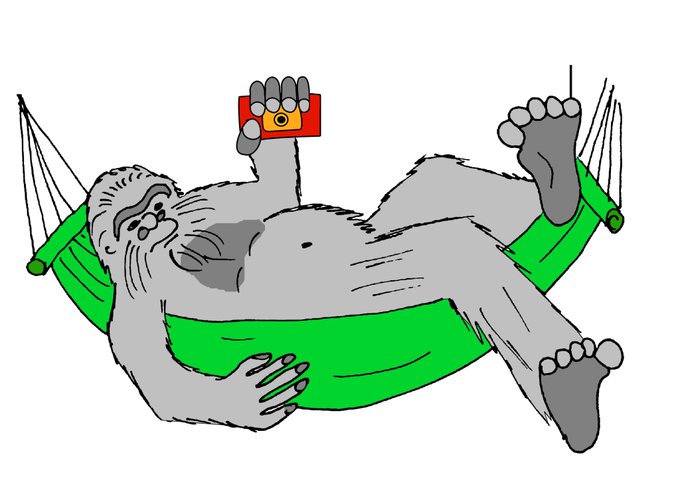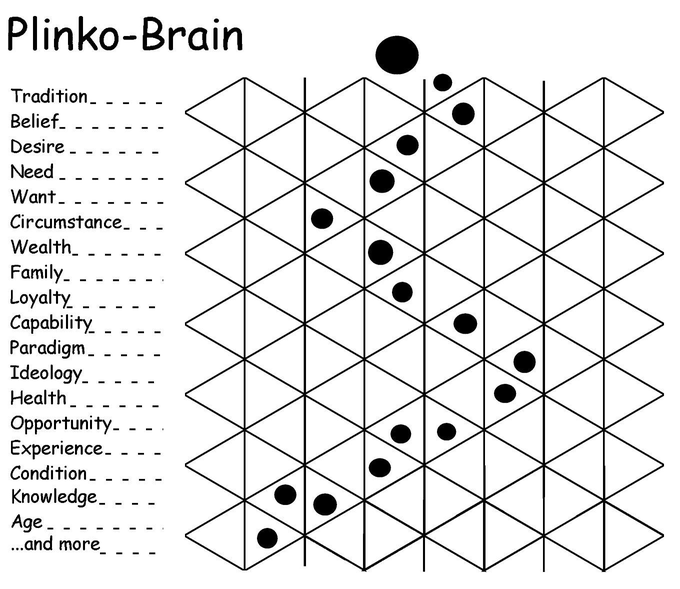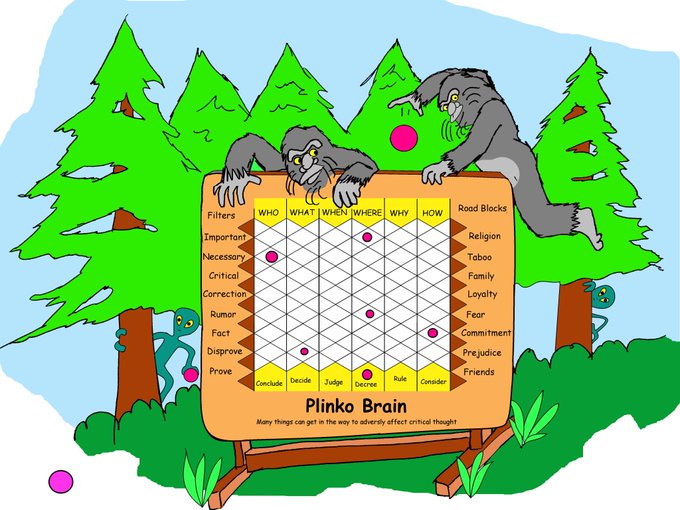Read Time:2 Minute, 40 Second
Continuing on with the Critical Bigfoot Theory elucidations…
Think about thinking. Do people ever think about how they process ideas or do we just wait till something pops then act?
Impulse control, or lack thereof. Industries thrive on 2-D thought.
-
Either/Or
-
Good vs Bad
-
Fight or Flight
What gets left out is the contemplation part of the equation.
So I made this chart to show the critical thought process that includes the WWWWWH’s questions which are so necessary in making good decisions.
Good decisions about the existence of Bigfoot also includes the ability to determine what resources and tools are available and whether the sources are credible.
How can we tell when a resource is credible?
Bigfoot relaxes in a hammock to take a selfie.
Teltale signs include:
⚠️Blurry and altered or photo-shopped photographs.
⚠️Manipulative words that target emotional responses and trigger cognitive biases. Manipulative language may indicate the writer is more interested in conversion, persuasion, indoctrination rather than education.
⚠️Propaganda often takes advantage of cognitive biases to persuade, incite, encourage, intimidate and pressure.
⚠️Buzz Words that promote a particular outcome and ignore viable alternative explanations.
⚠️One-sided anecdotal information, appeals to authority arguments that hide or distort facts.
⚠️Appeals to our senses sight, hearing, touch, smell, taste, etc. Colors, sounds, scents can affect emotions in order to influence believably.
⚠️Social media influences, friend recommendations can instill illusions of trust.
⚠️Lack of source attribution. Quote supposed facts but give no link or source for the statement.
That all account for over half the internet content these days.
So, I ask some challenging questions in the book for readers to mull over like:
-
Who is Bigfoot?
-
What is Bigfoot?
-
When does Bigfoot appear?
-
Where does Bigfoot live?
-
Why do people believe in Bigfoot?
-
How can Bigfoot exist?
Clever of me how I inserted the WWWWWH’s there eh?
I bring up memories and assumptions that can develop into stereotypes and how important it is to recognize our own biases.
Even I struggle, can you believe that?!
The Critical Bigfoot Theory Decision Grid kinda walks the reader through the process
-
A question is …
-
Internal memory is …
-
Virtual processing is …
-
A decision is…
I also opine upon the myriad of ways decision making can be influenced consciously and subconsciously, moods, personalities, events, taboos etc.
Which brings me to PlinkoBrain, a term I’ve used like forever to describe the pinball effect of an idea bouncing off roadblocks in the brain.
We all seem reasonably educated in external roadblocks to blame for keeping us blocked, restricted, afraid and trembling…
Ask yourself what blocks you build for yourself:
What PlinkoBrain roadblocks do I have that keep me a skeptical unbeliever?
Which PlinkoBrain roadblocks do I hold that convince me Bigfoot exists?
Do you ever give your own fears a thought?
The decision grid is pretty straight forward and could be a useful visual to teach how we think, perhaps.
-
External Input: Ask the question: Does Bigfoot exist?
-
Internal Memory: Recall what you already know about Bigfoot.
-
Virtual Processing: Research, evaluate, compare new vs old information.
-
Response: Make a decision, conclusion, opinion or reaction.
Once we get the pattern down we’re ready for some good questions to ponder.



